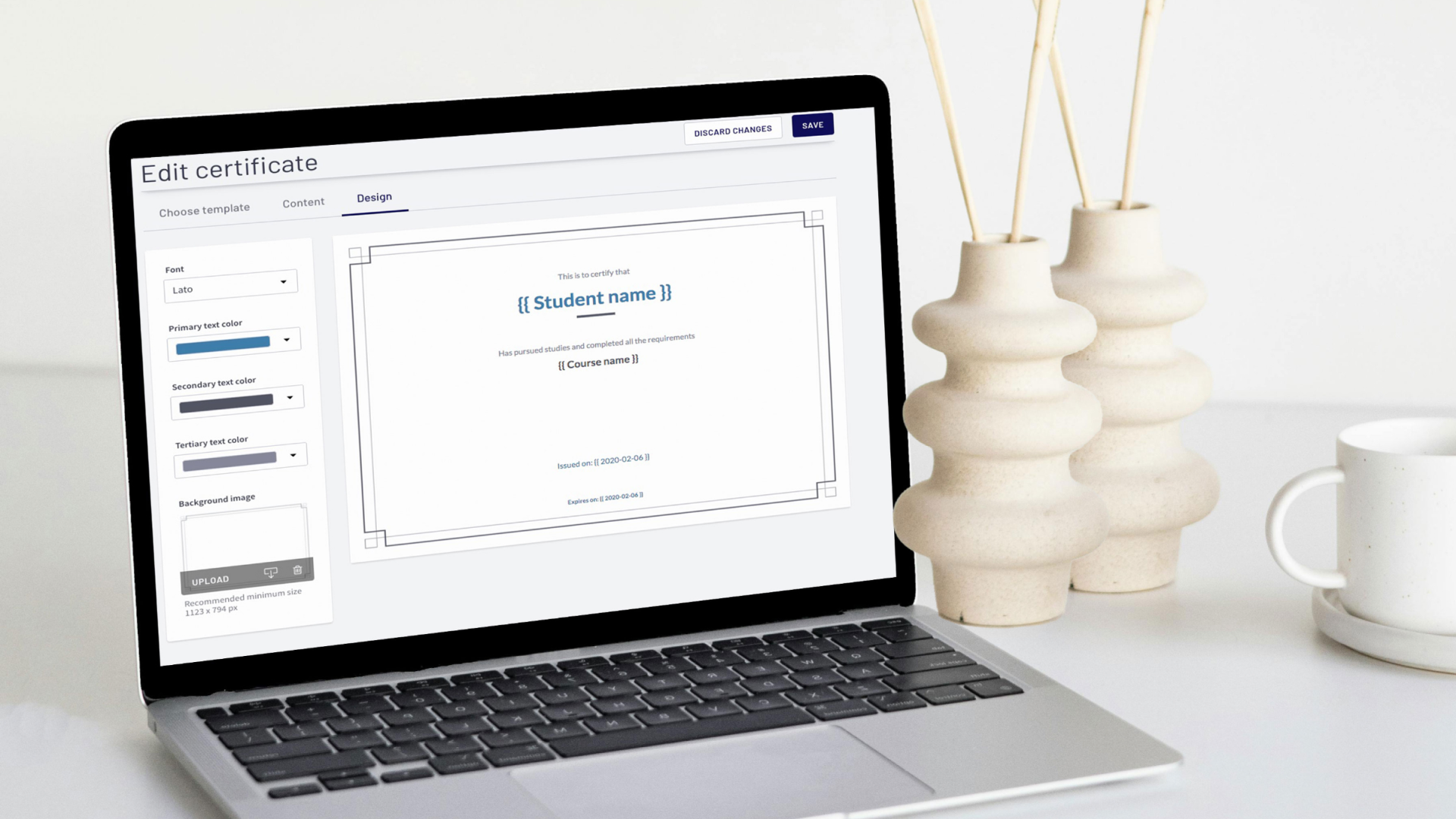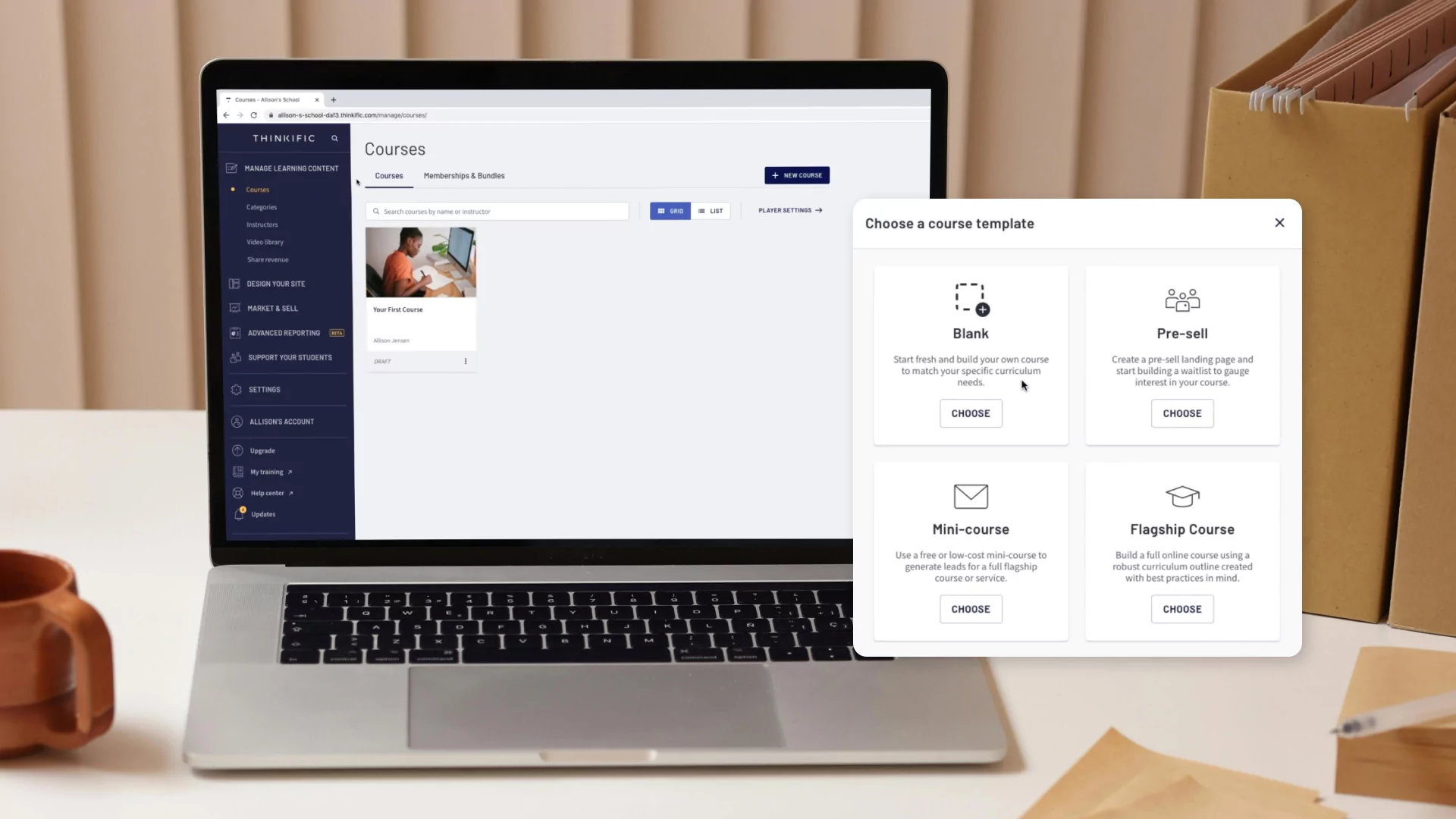Churn is more than just a metric in the SaaS world—it’s the pulse check of your business’s ability to retain and satisfy customers. Reducing churn should be at the forefront of every SaaS company’s strategy in an industry where steady customer retention is critical for sustainable growth.
But why does churn matter so much? The cost of acquiring new customers is far higher than keeping existing ones, and a high churn rate can erode not only your revenue but also your reputation. Even a 5% boost in customer retention can lead to a significant revenue increase. For SaaS businesses looking to scale, combating churn is key to unlocking growth potential.
The solution? Customer education. By empowering your customers with the knowledge they need to succeed, you can create lasting relationships, increase product adoption, and drastically reduce churn.
In this article, we’ll explore the impact of churn on SaaS businesses and the power of customer education programs in reducing churn. We’ll also show you how Thinkific Plus can help you scale these initiatives to maximize retention and drive long-term success.
Skip ahead:
-
Unraveling SaaS Churn: A Crucial Metric for Success
The Impact of Churn on SaaS Businesses
Strategies to Combat SaaS Churn
The Role of Customer Education in Reducing Churn
Empowering Customer Education with Thinkific Plus
Unraveling SaaS Churn: A Crucial metric for success
Churn in the SaaS world is more than just a number—it’s an indicator of how well you’re engaging, educating, and retaining your customers. When customers leave, it often signals gaps in their understanding of your product, unmet expectations, or friction in their user experience. As a result, maintaining a low churn rate is not only vital for sustained revenue growth but also for the long-term health of your business.
The SaaS industry sees an average churn rate hovering around 10%—a benchmark that businesses are actively working to undercut.
Boosting customer retention by just 5% can significantly enhance revenue streams, driving financial and strategic significance while strengthening customer loyalty. For this reason, industry leaders view churn as a key metric of customer satisfaction and business success.
But to truly combat churn, you need more than a reactive approach. Proactive customer education plays a critical role in reducing churn, helping customers fully grasp the value of your product and deepening their engagement over time. The more knowledgeable your customers are, the more confident they feel using your product—leading to a stronger connection and longer-term loyalty.
The impact of churn on SaaS businesses
The ripple effects of churn on SaaS enterprises extend far beyond surface-level metrics. As we delve into the multifaceted impacts of churn, it becomes clear that its consequences are both wide-reaching and profound, influencing not just revenue but also operational dynamics and market perception.
The direct financial impact
At the heart of churn’s consequences lies its direct impact on financial health. High churn rates erode the customer base, leading to immediate revenue loss and compounding financial strain over time.
This scenario necessitates a continuous influx of new customers just to maintain revenue levels, let alone achieve growth.
Key points include:
-
Revenue decline: Each customer lost is a direct hit to recurring revenue, a fundamental pillar for SaaS business stability and growth.
Increased Customer Acquisition Costs (CAC): As churn rates climb, so does the pressure to replenish the customer base, leading to increased spending on marketing and sales efforts. This escalatory cycle of acquisition costs can severely dampen profitability.
Reduced economies of scale: The scalability of SaaS models relies on spreading fixed costs over a growing customer base. High churn rates compromise these economies of scale, increasing the cost per customer and squeezing margins.
Operational and strategic setbacks
Churn affects a business’s bottom line, as well as its operational efficiencies and strategic planning.
High churn rates can also lead to:
-
Increased marketing and acquisition costs as businesses try to replace lost customers.
A misallocation of resources, diverting attention from product development and enhancement to customer replacement strategies.
Brand and market perception
The indirect consequences of churn can also resonate through a brand’s market standing and customer perception.
Consistent churn can signal to the market that a product fails to meet customer expectations or that a company doesn’t prioritize customer satisfaction, leading to:
-
Loss of trust and brand loyalty among existing and prospective customers.
A harmed reputation, making it harder to attract new users and retain existing ones.
The domino effect on growth and innovation
Ultimately, high churn rates can stifle a company’s ability to innovate and grow. The constant need to address churn diverts resources and focus from innovation and enhancement, slowing progress and hampering competitive advantage.
Strategies to combat SaaS churn
To effectively combat SaaS churn, businesses should employ a multi-faceted strategy that addresses the symptoms and targets the root causes of customer departure.
Among the many strategies, customer education stands out as a cornerstone for fostering engagement and loyalty.
Below, we outline several actionable solutions for reducing churn rates, including a brief explanation on calculating churn to monitor and measure success.
Understanding and calculating churn
Before diving into the strategies, it’s crucial to have a clear understanding of how to calculate churn rate, which provides a quantifiable measure of customer retention and business health.
The basic formula for calculating the monthly churn rate is:
Churn Rate = (Number of Customers at the Beginning of the Month / Number of Customers Lost During the Month) × 100
For example, if you started the month with 200 customers and lost ten by the end, your churn rate would be:
(10/200) × 100 = 5%
Now you know how to calculate your business churn rate, let’s look at five ways to reduce it.
Enhancing customer onboarding
A smooth and tailored onboarding experience is critical to setting the foundation for long-term success. Customizing the onboarding experience to meet customers’ specific needs and goals can significantly reduce churn.
With Thinkific Plus, you can create personalized, self-paced onboarding courses to ensure customers fully understand your product from day one. This scalable approach to education reduces the burden on your customer success team while improving customer satisfaction and time-to-value (TTV).
-
Self-paced onboarding: Helo your customers onboard at their own pace through interactive online courses, making the process more streamlined and scalable.
On-demand resources: Thinkific Plus allows you to provide resources like FAQs, video tutorials, and step-by-step guides that customers can access anytime. This helps customers address challenges and learn new skills independently while reducing support tickets.
Leveraging customer education
Customer education is the cornerstone of a successful retention strategy. Educated customers understand your product’s capabilities, and are more likely to integrate it into their daily workflows, increasing product stickiness and reducing churn.
Thinkific Plus enables you to build comprehensive education programs that include interactive tutorials, webinars, and certifications—helping customers get the most out of your product.
-
Personalized learning: Go beyond static documentation by offering personalized learning experiences through quizzes, simulations, and gamified elements. These formats enhance knowledge retention and increase engagement.
Scalable education: Whether you’re onboarding 100 or 10,000 customers, Thinkific Plus’s intuitive course builder allows you to scale your education programs without losing quality or consistency.
Certifications and badges: Reward customer progress with certifications or digital badges, turning education into a motivator that enhances loyalty.

Implementing customer feedback loops
Customer feedback is invaluable when it comes to reducing churn. Regularly engaging with customers to gather feedback ensures that you address potential issues before they escalate.
-
Engage in regular feedback collection.
Engaging with customers to gather feedback regularly helps identify and address potential issues before they lead to churn. Use surveys, user forums, and direct outreach to understand customer needs and improve product offerings.
Implement actionable insights
Collecting feedback is not enough; acting on it is crucial. Demonstrate to your customers that their input leads to changes, reinforcing their importance to your business and incentivizing continued engagement.
Personalizing customer interactions
Personalization goes a long way in making your customers feel valued and understood, which in turn builds loyalty and reduces churn.
-
Make use of segmentation and personalization.
Utilize customer data to personalize communications and product recommendations.
Leverage dynamic content delivery.
Use customer behavior and preferences to deliver dynamic content that adapts to their needs over time. This could mean customizing help resources, upsell opportunities, or support interactions to match their usage patterns.
Become proactive about customer success initiatives.
Predicting churn before it happens is key to reducing it. By using predictive analytics and regular customer success check-ins, you can proactively retain at-risk customers.
- Use predictive analytics for intervention.
Employ predictive analytics to identify at-risk customers before they churn. You can proactively reach out with personalized solutions, education, or incentives to retain these customers. - Schedule regular success planning sessions.
Regular check-ins with customers to discuss their goals, challenges, and progress can be pivotal in adjusting their path to success with your product, tailoring customer journey maps, and preventing potential churn.
Implementing these strategies requires a combined effort across the organization, from product development to marketing and customer service.
By prioritizing customer education and engagement, SaaS companies can reduce churn and build a loyal and satisfied customer base that champions their product in an increasingly competitive market.
The role of customer education in churn reduction
 Image: Unsplash
Image: Unsplash
In the quest to curb SaaS churn, the role of customer education emerges as both an important goal and a powerful tool.
By empowering customers with knowledge, businesses can unlock new levels of engagement, product adoption, and satisfaction, creating a foundation for lasting relationships.
Empowering through knowledge
Customer education equips users with the knowledge they need to explore, understand, and fully utilize your product. The more informed your customers are, the more effectively they can leverage advanced features, integrate your product into their daily workflows, and achieve their goals efficiently.
This level of empowerment fosters independence and competence, reducing frustration and boosting satisfaction—a key factor in lowering churn rates.
Fostering engagement and loyalty
Educational initiatives create multiple touchpoints for engagement, allowing customers to interact with your brand in meaningful ways. Whether through webinars, interactive courses, or one-on-one training sessions, each educational interaction reinforces the customer’s decision to stay with your product.
The more they engage, the deeper their connection to your brand, making the idea of switching to a competitor less appealing. Over time, these ongoing engagements build loyalty, turning customers into long-term advocates for your business.
Enhancing product adoption
Customer education bridges the gap between potential value and actual value. Educational content demonstrates how your product can address customers’ specific needs and challenges by simplifying complex features and providing real-world applications. This clarity accelerates product adoption, ensuring customers quickly experience the benefits of their investment—a critical factor in reducing churn and driving long-term satisfaction.
In short, customer education isn’t just about training—it’s about building an ecosystem where customers feel supported, valued, and understood. By prioritizing education, businesses can transform the customer experience, cultivate a community of loyal advocates, and significantly reduce churn.
Empowering customer education with Thinkific Plus

Thinkific Plus takes customer education to the next level, offering SaaS companies a robust platform for reducing churn and boosting product adoption.
Its focus on engagement, combined with built-in features like rewards, communities, and a branded mobile app, helps maintain learner motivation and deepens customer relationships.
Key to Thinkific Plus’s success is its powerful analytics and reporting capabilities. These features allow businesses to track critical metrics like engagement, revenue, churn, and adoption rates. With this insight, companies can make strategic adjustments to their education programs and demonstrate ROI.
Remarkably user-friendly, Thinkific Plus’s intuitive course builder and template library make creating and launching courses quickly easy. Supported by a dedicated customer success team, businesses can align their customer education efforts with broader business goals from day one.
Designed for growth, Thinkific Plus accommodates unlimited course admins and supports multiple sites, making it flexible for various use cases. Its advanced customization options, including white-labeling and integrations with over 100 third-party apps, ensure a seamless, tailored learning experience.
Thinkific Plus empowers businesses to confidently scale their customer education programs, blending flexibility, engagement, and scalability into a comprehensive solution for SaaS success.
Conclusion: Building lasting relationships through education
In the business world of SaaS, customer retention is the cornerstone of sustainable growth. The key to reducing churn and fostering loyalty lies in empowering your customers with the tools they need to succeed. Customer education is not just an add-on—it’s a strategic investment in your customers’ success and, ultimately, your business’s success.
By providing engaging, personalized learning experiences, businesses can transform their customer relationships, turning them into loyal advocates. With Thinkific Plus, creating a comprehensive, scalable customer education program is easier than ever. From self-paced onboarding to ongoing product education, customized learning paths, and interactive content, Thinkific Plus helps you deepen customer relationships while driving product adoption and long-term loyalty.
Take your customer education to the next level with Thinkific Plus
Ready to reduce churn, boost engagement, and create a thriving community of loyal customers?
Download our Guide to Building a Customer Education Academy to get started. Learn how to create impactful educational programs that not only engage your customers but also deliver measurable results for your business.
Download the guide now and discover how Thinkific Plus can empower you to elevate customer success and drive growth.
Considering a new platform for online education?





